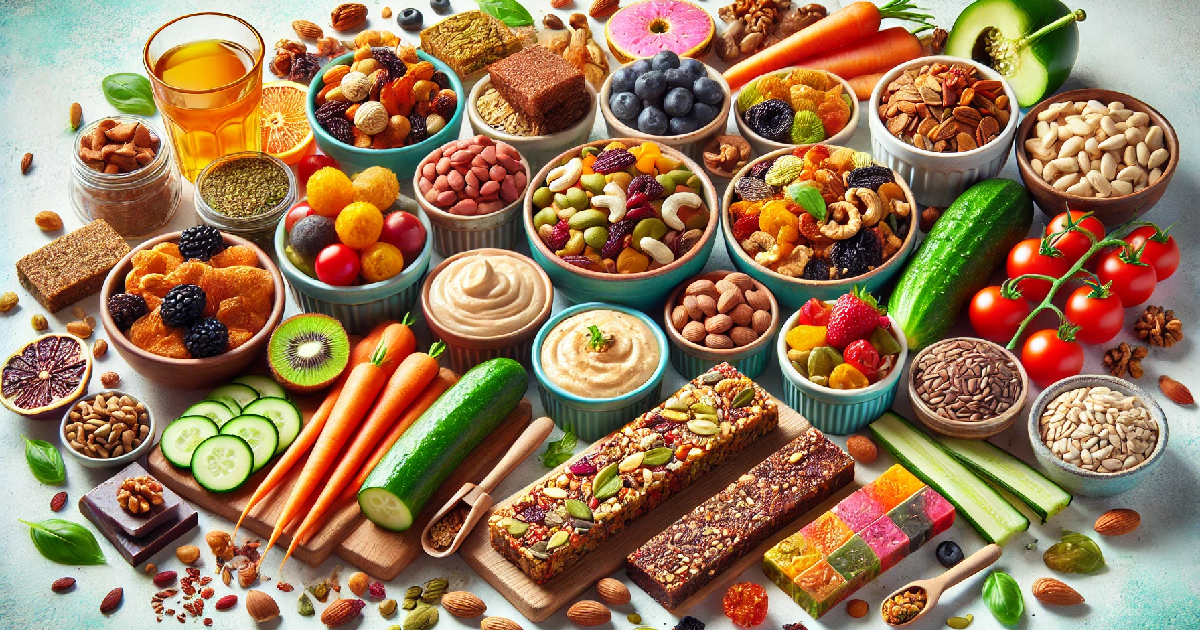Dog owners often struggle to feed their furry friends, especially when giving them the same type of food daily. Dogs, like humans, love variety in their meals and can get bored if they eat the same thing repeatedly. Adding dog food sauce is a great way to spice up your dog’s meal.
Adding a sauce to your dog’s food can not only make it more exciting for them, but it can also add some nutritional benefits. However, not all sauces are suitable for dogs as some may contain harmful ingredients such as garlic or onion that can be toxic. This article will explore what sauces are safe and nutritious for dogs and how you can incorporate them into your pet’s diet.
What Sauces Can Dog Eat?
As a pet owner, ensuring that your furry friend eats a balanced and nutritious diet is essential. While plain dog food may not always be the most appealing option for your pup, adding sauces can help make their meals more flavorful and enjoyable. However, not all sauces are safe for dogs to consume.
Some of the best sauces dogs can include low-sodium chicken or beef broth, adding moisture to dry kibble and providing additional protein. Additionally, unsweetened applesauce is another excellent option as It has nutrients for dogs, including vitamins and minerals. Another good choice is pumpkin puree – this sauce is high in fiber and can aid in digestion.
On the other hand, there are some sauces you should avoid giving your dogs, such as garlic and onion-based sauces, which can be toxic to them. Also avoid giving them chocolate or dairy-based sauces as they may cause stomach upset or allergic reactions. As with any changes you make in their diet, it’s always essential to consult your vet before adding new foods or sauces to your dog’s meals.
What Can I Put on My Dog’s Food to Make It Taste Better?
Adding sauce to your dog’s food can make it more palatable and enjoyable for them. But it’s essential to select a sauce free of dangerous elements like onions or garlic that are secure for dogs.
One option is to use bone broth as a sauce. It is rich in nutrients and adds flavour to your dog’s food. Boil bones in water until the nutrients are released to cook this dish at home.
Another option is to use pureed fruits or vegetables such as pumpkin, sweet potato, or apple. These are naturally sweetening and rich in nutrients and vitamins that are good for your dog’s health.
It is important to remember that any new addition to your dog’s diet should be introduced gradually and in small amounts so as not to upset their stomachs. Before making any dietary adjustments for your pet, always check with your veterinarian.
What Can I Mix With Dog Food?

When it comes to mixing things with dog food, the possibilities are endless. One popular option is to add a sauce or gravy to their kibble. Not only does this make it more appealing and tasty for your furry friend, but it can also provide added nutrition.
Some great options for dog food sauce include bone broth, which is high in protein and can help support joint health. Another option is pumpkin puree, which is fibre-rich and can aid digestion. Add some plain Greek yoghurt or cottage cheese for protein and probiotics.
It’s crucial to remember that not all human foods are suitable for dogs. Always do your homework before introducing anything new to your dog’s diet if you have any concerns or queries about what foods are safe.
What Food Makes Your Dog Smell Good
Adding the proper sauce to your dog’s food can make them smell good and improve their appetite. One option is to add a small amount of chicken or beef broth to their dry kibble. This will add flavour and moisture, which can be beneficial for dogs with dry skin or those who don’t drink enough water. However, it’s essential to check the ingredients in the broth to ensure that it doesn’t contain harmful additives like onion or garlic.
Adding a tiny bit of canned pumpkin puree, which is strong in fiber and can help control your dog’s digestion, is another alternative. Not only does pumpkin taste great to dogs, but it also has natural deodorizing properties that can help reduce bad breath and body odour. Use pure pumpkin puree without any sugar or spices; make sure.
Finally, sprinkle dried parsley or mint leaves into your dog’s food. These herbs have natural freshening properties that help neutralize odours from your dog’s mouth and digestive tract. Additionally, they are rich in vitamins and minerals that are good for general health.
Easy Dog Gravy Recipe
Since dogs are notoriously picky eaters, adding extra gravy can improve its appeal. One easy dog gravy recipe is made with chicken broth, flour, and butter. To create this recipe, melt the butter in a saucepan over medium heat and then add the flour while stirring constantly until it forms a paste. Gradually whisk in the chicken broth until the mixture becomes smooth.
Another easy dog gravy recipe option is to use canned pumpkin puree as a base. Just combine canned pumpkin puree with low-sodium chicken broth or water to achieve the proper consistency. This recipe adds flavour and provides additional nutrients such as fiber.
It’s important to note that some human gravies are not safe for dogs due to ingredients like onion and garlic, which can be toxic to them. Therefore, it’s always best to stick with simple homemade recipes or purchase dog-specific gravies from reputable brands.
What Can I Cook My Dog With a Sensitive Stomach?
It can be challenging to locate a sauce to add to your dog’s food that won’t disrupt their digestive system if they have a sensitive stomach. However, some options may work for your furry friend. One option is mixing low-fat, plain yoghurt with their food. This can help soothe their stomach and provide them with some additional nutrients.
Making your broth home with lean meats like chicken or turkey is an additional choice. Boil the meat in water for several hours until it becomes tender and falls off the bone. You can then strain the broth and add it to your dog’s food for a tasty and nutritious boost.
Lastly, consider adding some pumpkin puree to your dog’s food. Pumpkin is high in fiber and can help regulate digestion, making it an ideal addition for dogs with sensitive stomachs. Use only pure pumpkin puree without any sugar or spices added.
Best Dog Food Toppers of 2023
If you want to give your furry friend’s meal a little extra boost, dog food toppers are a great way to do it. Dog food toppers come in various forms, including wet, dry, and freeze-dried. They can be used independently or mixed with your dog’s food.
In 2023, some of the best dog food toppers on the market include Stella & Chewy’s Meal Mixers, made with real meat and organic fruits and vegetables. Another great option is Honest Kitchen Proper Toppers, human-grade dry ingredients that can be sprinkled onto any dog food. The glucosamine and chondroitin in Zesty Paws Mobility Bites are great for dogs needing additional joint support.
If you’re looking for something that adds flavour and health benefits, try PureBites Mixers. These freeze-dried mixers come in flavours like chicken breast and wild salmon and are made with only one ingredient – meat! Finally, for dogs with sensitive stomachs or allergies, Weruva Pumpkin Patch Up is an excellent choice. Made with only pumpkin puree and water, this simple topping can help soothe upset stomachs and improve digestion.
Homemade Dog Food Sauce
One of the most popular homemade dog food sauce is bone broth. It’s packed with nutrients that are beneficial for your furry friend’s health, including glucosamine and collagen, which promote healthy joints and skin. To make bone broth, simmer chicken or beef bones in water for several hours until all the goodness has been extracted. Once done, strain the liquid and let it cool before adding it to your dog’s food.
Another sauce you can add to your dog’s food is pumpkin puree. Not only does it enhance the flavour of their meal, but it also aids digestion and promotes regular bowel movements due to its high fibre content. To make pumpkin puree, cut a fresh pumpkin into small pieces and roast them in an oven until they’re soft enough to blend into a smooth paste. Any surplus puree can be kept in the refrigerator for up to three days in an airtight container.
Finally, try adding some homemade gravy to your dog’s food for an extra burst of flavour! Mix equal parts flour and oil (such as vegetable or coconut oil) over medium heat until they form a thick paste before gradually pouring in low-sodium chicken or beef broth while continuously whisking until you get a smooth consistency that isn’t too thick or too thin. Allow it to cool before drizzling over your pup’s meal – they’ll be sure to lick their bowl clean!
Can Dogs Have Ketchup?
Ketchup, a staple condiment in many households, is often used to add flavour to various foods. However, when it comes to feeding dogs, pet owners should be cautious about what they give their furry friends. While ketchup in small amounts may not be harmful to dogs, it is not recommended as a regular addition to their diet.
One concern with giving dogs ketchup is the high sugar content. Most ketchup contains significant amounts of sugar and sodium, which can lead to obesity and other health problems in pets. In addition, some brands of ketchup may also contain other ingredients, such as garlic or onion, that are toxic to dogs.
Instead of adding ketchup or other human condiments to dog food, pet owners can opt for natural alternatives like pumpkin puree or plain yoghurt. These options provide added nutrients while also being low in sugar and sodium. It’s always best for pet owners to consult with their veterinarian before making any changes or additions to their dog’s diet.
Soy is a Popular Ingredient in Many Human Foods, but Can Dogs Eat Soy?
The answer is yes; dogs can eat soy in moderation. It’s crucial to remember that dogs and people have different digestive systems and dietary requirements. Soy products contain high levels of phytoestrogens, which mimic estrogen in the body; this may cause hormonal imbalances in some dogs. Additionally, soybean allergies are not uncommon among some breeds of dogs.
When feeding your dog soy-based products like tofu or tempeh, ensure they are organic and non-GMO. Also, avoid giving them too much at once, as it may cause upset stomachs or diarrhoea. Instead of relying solely on plant-based proteins for your dog’s diet, consider a balanced mix of animal proteins combined with whole grains and vegetables.
As for sauces to add to your dog’s food, plain low-sodium chicken or beef broth can be a great addition to their meals. Avoid using dog food sauce with garlic or onion, as these ingredients are toxic to dogs. It’s crucial to remember that dogs and people have different digestive systems and dietary requirements.
Are Dogs able to Consume Sour Cream? What Should You Know About Sour Cream and Dogs?
If you want a sauce to add to your dog’s food, sour cream may not be the best option. While it is not toxic or harmful to dogs in small amounts, it is high in fat and can cause digestive issues if consumed in large quantities. Dogs have specific nutritional needs, and their food should be carefully chosen to meet those needs. This is important to remember.
It’s critical to remember that dogs have specific dietary requirements, and their food should be carefully selected based on those requirements. If you want to add flavour or moisture to your dog’s food, there are plenty of safe options, such as bone broth or plain yoghurt (in moderation). Alternatively, you can consult with your veterinarian for recommendations on commercial dog-friendly sauces or recipes for homemade options. Stick with safer alternatives that will benefit their health and well-being.
Can Dogs Eat Whipped Cream? What You Need To Know
If you’re considering adding whipped cream to your dog’s food, it’s essential to know that while it may not be toxic, it isn’t necessarily a healthy choice. When drunk in significant numbers, whipped cream’s high sugar and fat content can cause weight gain and other health issues. Additionally, many dogs are lactose intolerant or have trouble digesting dairy products, so feeding them whipped cream could cause stomach upset.
Instead of adding whipped cream or other sugary sauces to your dog’s food, consider incorporating healthy ingredients like cooked vegetables or lean proteins. Without the additional sugar and fat found in whipped cream, plain yoghurt or cottage cheese can also be good options for enhancing the flavour and nutrition of your dog’s meals.
Ultimately, consulting with a veterinarian about your dog’s specific dietary needs is the best way to ensure they receive a balanced diet that meets their nutritional requirements. They might even be able to suggest nutritious toppings or sauces that are suitable for dogs to eat!
Can Dogs Eat Marmite? What you need to Know
If you’re thinking of adding flavour to your dog’s food, marmite is not the best option. This popular spreadable yeast extract contains high salt levels, which can harm dogs if consumed in large quantities. In addition, marmite is rich in B vitamins and minerals that can cause an imbalance in a dog’s diet if fed regularly.
It’s important to remember that dogs have different dietary requirements than humans, and what may be safe for us to eat may not necessarily be safe for our furry friends. Instead of using marmite or other human condiments on your dog’s food, opt for natural ingredients like fresh herbs or spices that are safe for them. You can also discuss with a veterinarian or canine nutritionist for advice on adding variety and flavour to your dog’s meals without compromising their health.
Dog Food Flavour sprays
Dog food flavour sprays are an excellent solution for pet owners looking to add extra flavour to their dog’s meals. These sprays come in various flavours, including beef, chicken, and bacon. They are easy to use and can be sprayed directly onto your dog’s food.
One of the benefits of using dog food sauce flavour spray is that it can help entice even picky eaters to finish their meals. It is also an excellent option for dogs with dental issues or those who have difficulty chewing harder foods. Additionally, these sprays can be used as a training aid by spraying them on treats or toys.
While these sprays may include natural components and fragrances, it’s crucial to remember that they should still be used in moderation. Overuse could lead to weight gain or digestive issues in some dogs. Before adding flavour spray to your dog’s food, like with any other new item, it is essential to consult your vet.
Buy Dog Food Sauces
Adding sauce to your dog’s food can enhance the flavour and nutrition of their meal. Adding some tasty sauces to your pet’s regular kibble will revive their interest in their meals if they are picky eaters or have more delicate appetites. It’s critical to stay with sauces explicitly designed for dog food because not all human sauces are safe for canines.
Some popular options for dog food sauce include gravy, broth, and wet food mixes. Gravy is an excellent option for dogs who need an extra boost in flavour and moisture in their meals but still want to maintain a dry diet. It also provides essential nutrients like protein and vitamins that can contribute to your pet’s overall health.
The broth is another fantastic option as it provides hydration while being low in calories – perfect for overweight pups or those prone to urinary tract infections. Wet food mixes are excellent when you want to switch up your dog’s usual dry kibble texture or add variety to their diet without compromising nutritional value.
As a result, buying specially formulated dog food sauces can be an excellent way of making mealtimes more enjoyable for your pup while keeping them healthy at the same time. Always check the ingredients list of any sauce you’re considering using, and avoid anything that contains harmful additives like onions or garlic.
Tell Me The Best Sauce for Dogs
As a dog owner, you may wonder what sauce to add to your furry friend’s food. The best dog food sauce for dogs is low in sodium and contains natural ingredients. An excellent example of such a sauce is bone broth. Bone broth not only adds flavour to your dog’s food but also provides several health benefits.
Another great option for sauces for dogs is pumpkin puree. It has the necessary vitamins and minerals for your dog’s skin, coat, and digestive system. Pumpkin puree also helps with weight management as it has high fibre content that leaves your dog feeling full for more extended periods. When choosing the best sauce for dogs, it’s crucial to consider the ingredients’ nutritional value. Stick to natural options such as bone broth or pumpkin puree, which offer numerous benefits without harming your furry friend’s health.
What Foods Can Dogs Eat?
Knowing what foods are suitable for your animal companion to eat is crucial when it comes to feeding them.While some human food is okay in moderation, others can be dangerous and even deadly for dogs. First and foremost, dogs should always have access to fresh water and a balanced diet of high-quality dog food.
However, some human foods can be added as treats or supplements to their meals. These include cooked lean meats such as chicken or turkey without the skin or bones, plain cooked vegetables like carrots or green beans, and small portions of fruit, such as apples or bananas(avoid grapes and raisins, which can be toxic). Additionally, certain dairy products like plain yoghurt or cottage cheese can also be given in moderation.
When it comes to adding sauce to dog food, it’s important to choose something that is safe for them. Avoid anything with garlic or onion, which can cause anaemia in dogs. Instead, consider using low-sodium chicken broth or bone broth as a flavorful addition. Just remember not to go overboard with the sauce, as too much-added salt can be harmful to dogs’ health.
Two Thoughts on “What Sauce Can I Add to Dog Food.”
Peanut butter: Dogs enjoy the taste of peanut butter, which can supplement their diet with additional protein. However, make sure to choose natural peanut butter with no added sugar or salt, as those can be harmful to dogs. You can mix a spoonful of peanut butter with your dog’s regular food or use it as a dip for treats.
Bone broth: Adding flavour and nutrition to your dog’s food with bone broth is a terrific idea. It contains collagen, glucosamine, and chondroitin, which can help strengthen joints and improve digestion. By cooking bones, you may produce your bone broth (chicken, beef, or pork) in water for several hours or buy pre-made bone broth from pet stores.
Adding sauce to your dog’s food can enhance their eating experience and provide additional health benefits. Just be careful to stay away from sauces that are heavy in salt or that have components that are poisonous to dogs, such as garlic or onions. Consult your veterinarian, as always, before changing your dog’s food.
Conclusion
In conclusion, adding sauce to your dog’s food can be a great way to enhance their mealtime experience and provide them with some added nutritional benefits. You can pick from various sauces, including bone broth, canned pumpkin puree, and plain yoghurt. These sauces can help to improve the taste and texture of your dog’s food while also providing them with essential vitamins and minerals.
It’s crucial to take your dog’s particular nutritional requirements, as well as any potential allergies or sensitivities, into account when selecting a sauce for their meal. You should also avoid using any sauces that contain artificial ingredients or high levels of sodium, as these can be harmful to your pet’s health over time. By taking the time to carefully select a healthy and nutritious sauce for your furry friend, you can help to ensure that they stay happy and healthy for years to come.

























